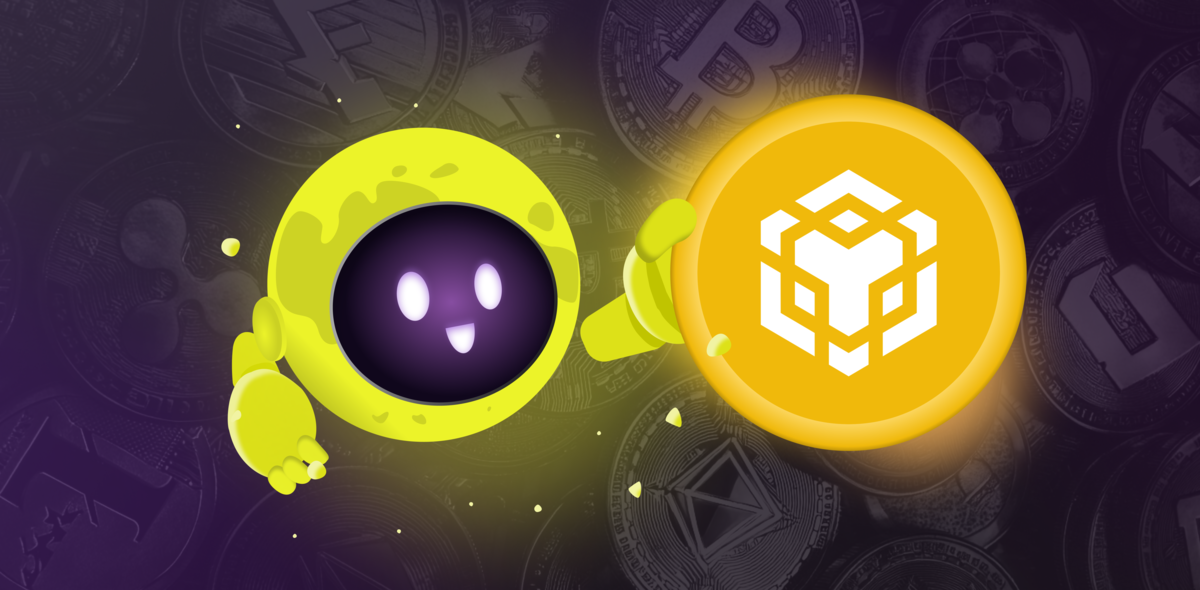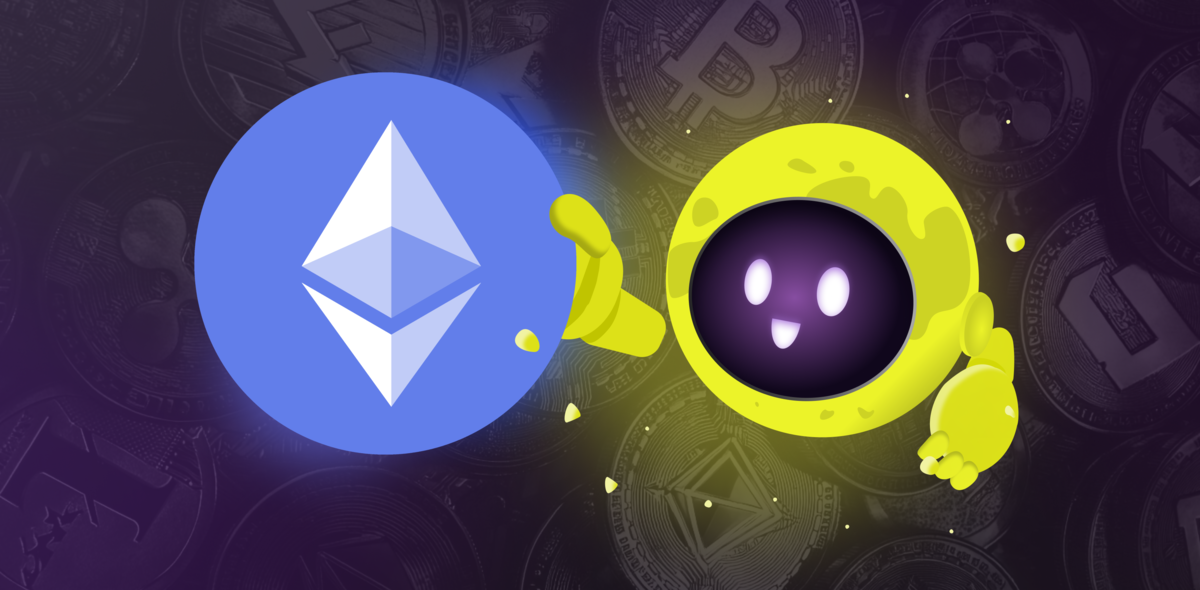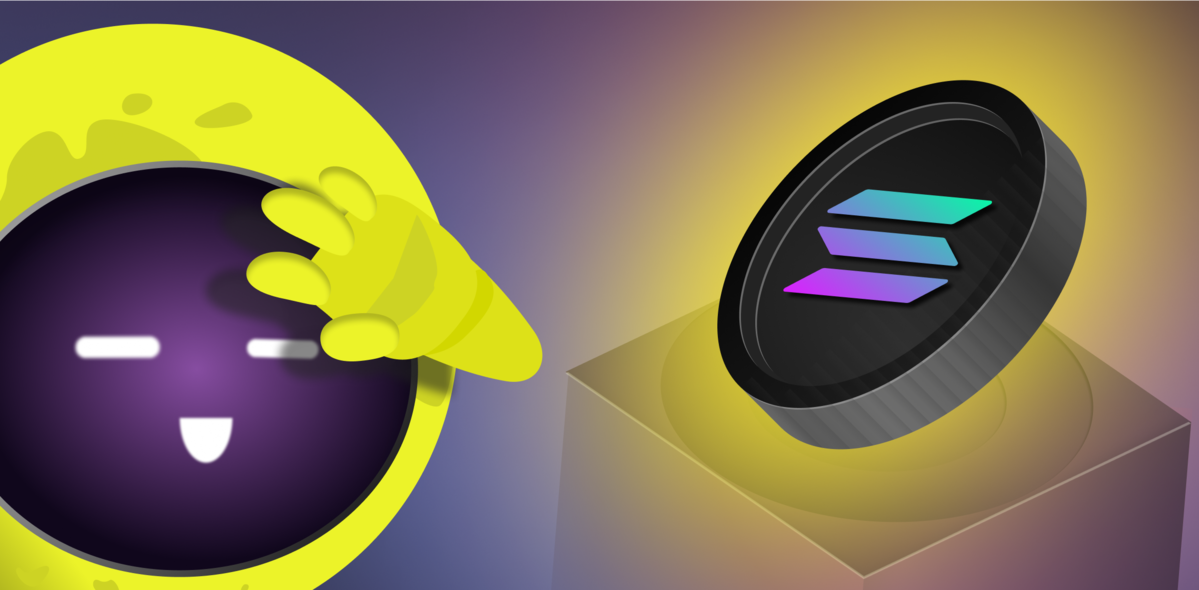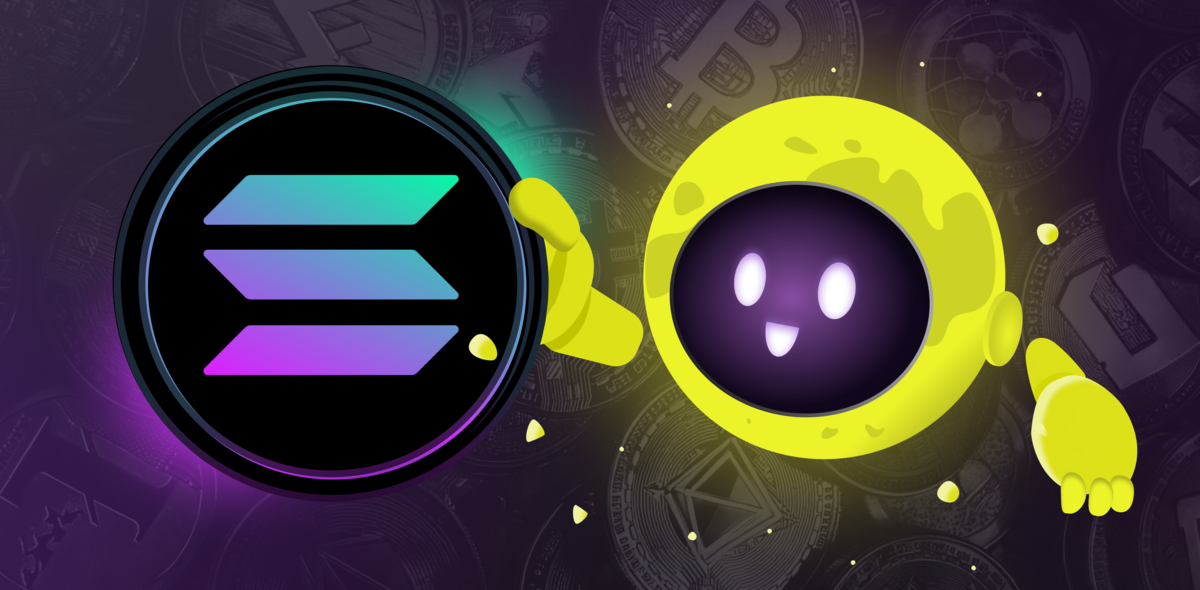
What is Solana (SOL)?
Solana is a blockchain network built for high performance. For those exploring what is Solana, it is best defined as a platform that allows fast, secure, and efficient on-chain operations without the typical limitations of older blockchain systems. It offers a foundation for developers to create fast, cost-efficient applications that scale without friction. The SOL token powers this ecosystem, handling everything from transaction fees to staking and governance participation.
With the growing demand for decentralized services, networks must support growing volumes of users and data, as well as perform consistently. Solana offers a solution by processing thousands of transactions per second, maintaining low fees, and fast confirmation times.
Solana takes a different route than traditional blockchains, replacing layered complexity with a performance-first design that prioritizes raw speed and efficient resource use. This direction has helped the network grow rapidly and become a leading choice for modern Web3 applications.
How does the Solana network function?
Proof of History: revolutionizing time in blockchain
Solana introduces a different way of thinking about time in blockchains. Instead of relying on external clocks or waiting for nodes to agree on when things happened, it uses Proof of History (PoH). PoH creates a built-in record of time that all participants can trust. It acts like a cryptographic clock, letting every node know when each transaction initiates, without waiting for others to confirm it. As a result, blocks are processed faster, and the entire network moves more efficiently.
While Proof of History keeps time ticking, it doesn’t work alone. Solana pairs it with Proof of Stake (PoS)— the part of the system that decides who gets to validate transactions and earn rewards. Validators are chosen based on the amount of SOL they’ve staked, which keeps the network secure and aligned. Together, PoH and PoS create the engine behind Solana’s speed — one keeps everything moving in order, and the other keeps it honest and secure.
Sealevel: enabling parallel execution
Another major piece of Solana’s architecture is Sealevel — a system built to run smart contracts in parallel. On most blockchains, smart contracts are handled one at a time, which can quickly create a bottleneck as more activity enters the network.
Sealevel changes that allow many contracts to be processed at once. It spreads the work across hardware like GPUs and SSDs, using the network’s resources more efficiently. This parallel execution means Solana can process thousands of smart contract instructions simultaneously, without the usual slowdowns or conflicts.
Thanks to this approach, developers working on Solana aren’t limited by execution speed. They can build more complex and responsive decentralized applications, relying on the system’s capabilities.
The origins of Solana: founders and early development
Solana started with an idea from Anatoly Yakovenko, an engineer with a background in building large-scale systems at Qualcomm. He understood how tough it is to keep things fast and coordinated when many devices are involved. As he explored blockchain technology, he wondered: what if you could keep all the core values of decentralization, but make everything run faster and smoother? That question sparked the early steps toward what would become Solana.
He shared the idea with Greg Fitzgerald, a trusted colleague, who helped build the prototype. Later, Raj Gokal joined to shape the business side. Together, they started Solana Labs, and by 2020, the network was live.
They also launched the Solana Foundation in Switzerland to support the ecosystem and promote decentralization. The foundation focuses on community initiatives, grants, and long-term growth.
The project’s name came from a beach town in California where some of the early work began. What began as a technical challenge among friends has grown into a fast, global blockchain network with thousands contributing to its development.
Distinctive features that set Solana apart
What makes Solana different isn’t just how fast it is, but how it’s built to handle high demand without slowing down or driving up fees. The network was designed from the start to scale with real-world usage, using a system that can process tens of thousands of transactions per second under the right conditions. Instead of treating speed, cost, and security as trade-offs, Solana tries to balance all three—something that most blockchains struggle with.
Several features contribute to its performance:
- Ultra-low latency with block times averaging 400 milliseconds
- Minimal fees, typically under $0.01 per transaction
- Advanced scalability with no need for Layer 2 solutions
- Support for smart contracts and dApps in many industries
Solana’s design makes it a strong fit for projects that need to move fast, whether it’s decentralized finance platforms, NFT marketplaces, browser-based games, or tools powering the Web3 space. Instead of slowing down under pressure, the network is built to keep up with high activity without breaking the experience or raising costs.
What drives the value of the SOL token?
As for why the SOL token matters, it plays a central role in keeping everything running. It's used to cover transaction fees, interact with smart contracts, and secure the network through staking. Those who stake SOL help maintain the network’s stability and, in return, earn rewards. Apart from utility, the token also represents a stake in the broader Solana ecosystem that continuously grows in different fields.
Several factors influence the token’s value:
- Utility within the ecosystem for paying fees and interacting with dApps
- Scarcity, with a controlled supply and regular token burning
- Adoption, driven by growing interest in NFTs, DeFi, and gaming applications on Solana
- Staking rewards give people a reason to hold onto their SOL, which helps keep fewer tokens in constant circulation
The more the Solana network is used for apps, games, or DeFi, the more SOL is needed to keep things running. That connection between usage and demand plays a vital role in how the token holds its value.
Circulating supply of SOL tokens
As of 2025, around 440 million SOL tokens are in circulation. While there’s no fixed supply cap, the total amount can shift over time based on how the network manages rewards and burns.
Solana uses a flexible model: new tokens are regularly issued as rewards for those helping secure the network, while a small portion of transaction fees gets permanently removed from circulation. This push-and-pull system helps keep the network running smoothly, encourages participation, and keeps inflation in check. Transparent supply metrics are publicly available on Solana block explorers and regularly updated by the foundation.
Technical overview and specifications
A closer look at the Solana network reveals a range of advanced technologies designed to optimize performance and user experience:
- Consensus Mechanism: Proof of History combined with Proof of Stake
- Average Block Time: 400–500 milliseconds
- Transaction Throughput: Over 2,000 real-time TPS, theoretical maximum 65,000+ TPS
- Average transaction cost: Less than $0.01
- Smart contract language: Rust and C-based development
- Validator count: 1,800+ independent validators
- Mainnet launch: March 2020
These features show that Solana is built to handle large-scale use while still staying secure and decentralized.
Practical applications and use cases
To answer the question “What is Solana used for?” we can explore its real-world applications. The network supports a wide range of use cases, including:
- Decentralized Finance (DeFi) – Lending, borrowing, trading, and yield farming
- Non-fungible tokens (NFTs) – Minting, trading, and marketplaces like Magic Eden
- Gaming and Metaverse – On-chain game economies and interactive experiences
- Web3 applications – Social platforms, creator tools, and DAOs
- Cross-chain bridges – Interoperability with Ethereum and other networks
Solana’s speed and low costs let developers build without constant trade-offs. Apps can grow, stay responsive, and serve more users without the usual bottlenecks. That reliability has drawn interest from well-known brands and builders pushing the boundaries of digital tools and experiences.
Wallet options for managing SOL assets
Accessing and managing Solana tokens requires a secure and compatible wallet. Several popular wallet options are tailored to meet different needs:
- Phantom Wallet – Browser extension and mobile wallet optimized for NFTs and DeFi
- Solflare – Offers staking, governance, and hardware wallet integration
- Ledger Nano S/X – Hardware wallet providing offline storage and enhanced security
- Trust Wallet – Mobile wallet with multi-chain support, including SOL
These wallets allow users to send, receive, store, and interact with Solana dApps, with varying levels of user interface design and advanced features such as token swaps, staking, and custom token support.
Staking on Solana: proof of stake in action
Staking is at the core of how Solana stays secure and fast. Token holders can lock up their SOL by running a validator node or delegating to one they trust. Validators process transactions and produce new blocks, while delegators support the network and share in the rewards.
This system is powered by Proof of Stake — a mechanism where the network relies on staked tokens to determine which validators are chosen. The more SOL staked, the stronger and more secure the network becomes.
Beyond security, staking also plays a role in token dynamics. As more SOL is locked up, less remains in circulation, which can help stabilize value and encourage long-term commitment from the community.
Solana vs Ethereum: a comparative analysis
The debate between Solana vs Ethereum centers on performance, cost, and ecosystem maturity. Both blockchains offer smart contract functionality and support for dApps, but they differ significantly in structure.
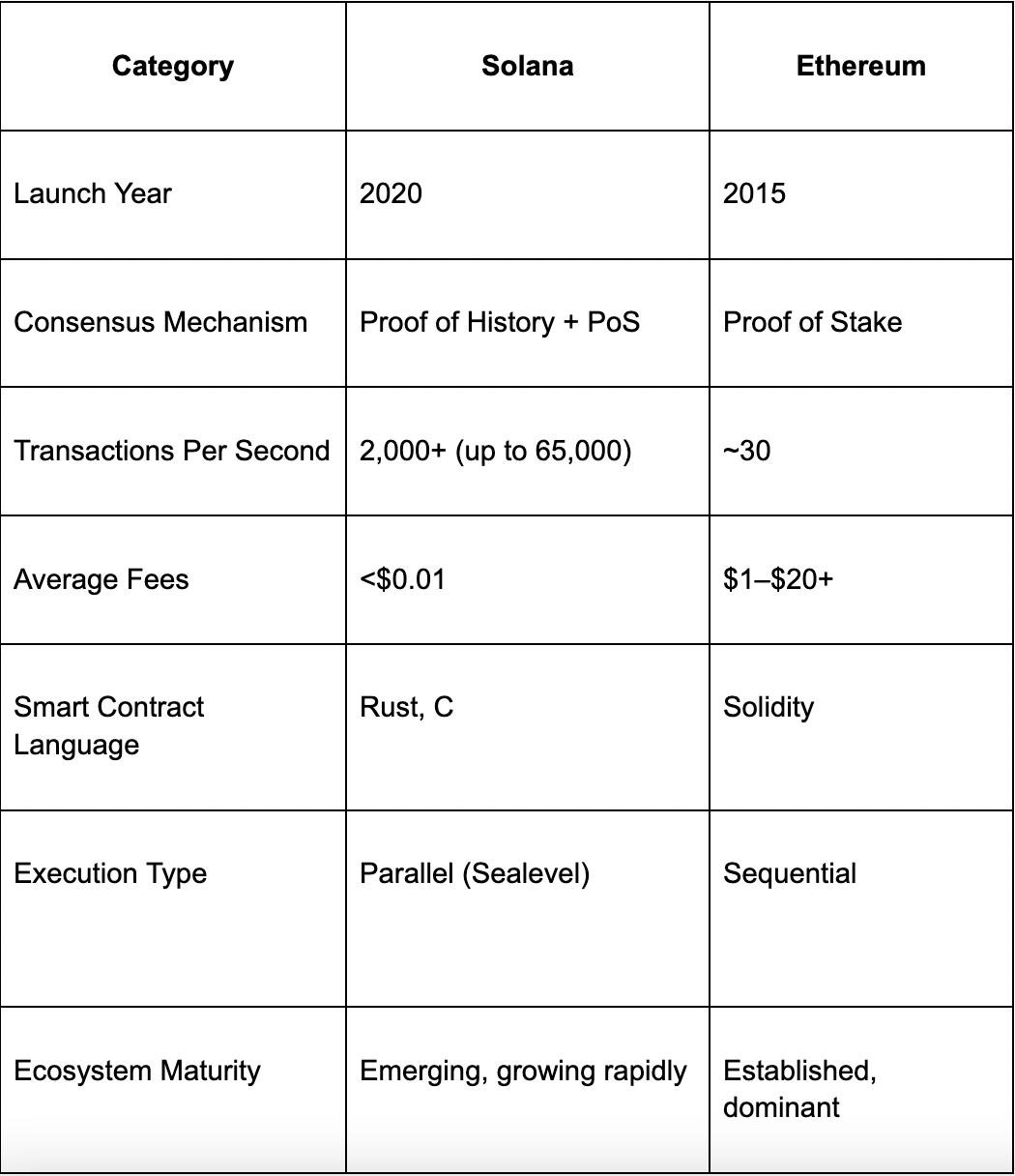
Solana blockchain is often chosen for applications that demand quick response times and low transaction costs. For example, games, NFT platforms, and real-time financial tools. Its design allows for high throughput without slowing down or getting expensive. Ethereum, while generally slower and pricier to use, has the advantage of a long-established ecosystem, a massive developer community, and a wide array of mature tools and projects.
Final thoughts
For those seeking a complete understanding of what is Solana, the platform represents a significant advancement in blockchain technology. It delivers the speed, scalability, and infrastructure required for the global adoption of decentralized services.
Solana explained as a home to all kinds of on-chain apps — from trading platforms and NFT projects to games and social tools. What sets it apart is how smoothly everything runs, even when activity spikes. Developers don’t have to worry about slow speeds or high costs, which makes it easier to build useful, everyday products. As more projects launch, Solana becomes a key player in how blockchain fits into real-world tech.


